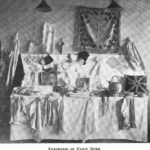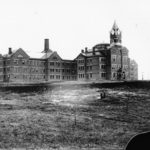
Elizabeth Packard Being Kidnapped in Broad Daylight and Taken to an Insane Asylum, courtesy National Library of Medicine
The case of Peter Thompson Good Boy (see last three posts) shows how easy it was for a Native American to lose his freedom. It would be safe to say that few or no patients at the Canton Asylum for Insane Indians actually wanted to be there. Patient Susan Wishecoby thought she was going to a hospital when she agreed to go; she apparently had epilepsy or something like it that gave her “spells” that were disruptive. She wrote plaintively that if she had known where she was going, she never would have agreed to come.
White patients also resisted commitment to an asylum. Many patients have written about the way they were tricked into asylums. Some went on carriage rides that ended at an asylum entrance; women, in particular, were sometimes arrested unexpectedly (usually at the request of a male relative or husband) and taken to an asylum; other times women or men were asked to accompany a friend or relative to a law office or some such place to help with a legal matter, only to find that the legal proceedings were loose insanity hearings against themselves!
Though outrageous tricks were played on men and women alike, women were particularly vulnerable to abuses of authority. Many women wrote about how easy it was for husbands to commit their wives to asylums. In her book, Behind the Scenes, or Life in an Insane Asylum* (1878), Lydia A. Smith writes: “If a man tires of his wife . . . it is not a very difficult matter to get her in an institution of this kind. Belladonna and chloroform will give the appearance of being crazy enough . . . .”
*Available today as a reprint or free ebook.







